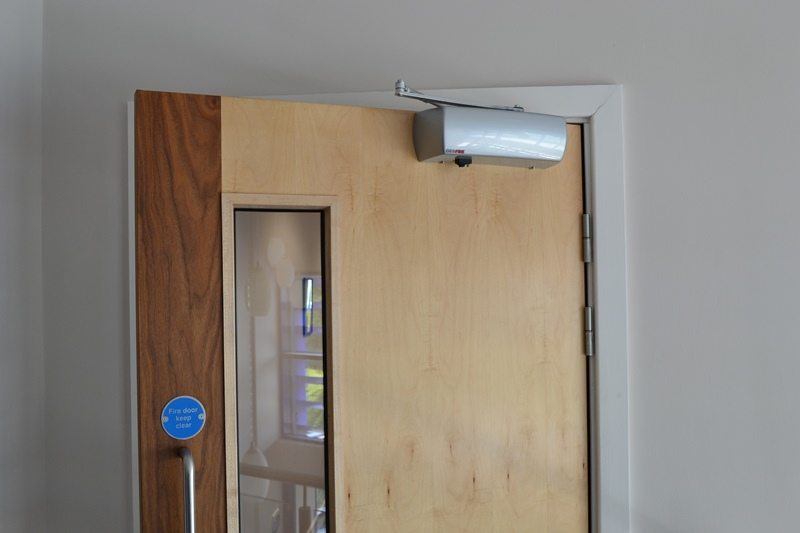Salamander opens the door to fully compliant wire-free fire door safety in the health sector
Posted on May 10, 2016
Fire door safety was recently brought into sharp focus by reports that a Manchester hospital had been ordered to tackle fire safety breaches in its operating theatres following a routine fire service check, which revealed numerous serious failures including wedged open fire doors.
Whilst it can be tempting to wedge open fire doors to help free movement around a busy building such as a hospital or care home, this practice is illegal and provides no protection for a building and its occupants should a fire break out, allowing smoke and flames to rapidly spread.
Geofire’s Salamander range of radio controlled fire door safety products are increasingly being installed in many healthcare locations across the UK, including hospitals and residential care homes due to their hygienic positioning at the top of the door rather than on the floor. The Salamander system has all the benefits of hard-wired electromagnetic door holders and closers, but as the devices are wire-free, they are quick and easy to install, saving time, installation costs and require no disruption to a building’s fabric or its occupants.
The Salamander door holder and free-swing door closer are suitable for Category A installations, the safest installation defined by BS7273-4; the products suit all areas of a building including main fire escape routes. They are also approved to EN1155 and CE marked.
Salamander devices are battery operated and connect wirelessly to a mains-powered controller unit, which is easily wired into existing fire alarm systems, ensuring that fire doors will safely close in the event of a fault or fire. One controller unit can manage up to 99 fire door holders and fire door closers.
Keeping fire doors in the open position has many benefits; ensuring ease of access in line with the disability provisions of the Equality Act 2010, helping to prevent wear and tear of expensive fire doors and improving building ventilation.
< Back to Articles

